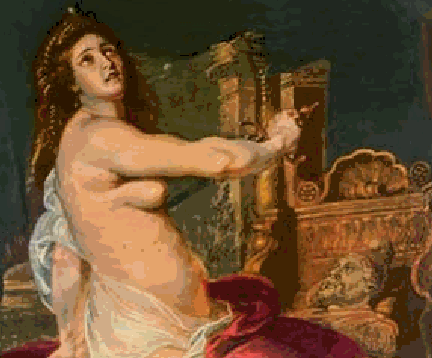 |
 |
 Dido's Death, Rubens  Peter P. Rubens (1577-1640), Dido's Death Peter Paul Rubens Rubens, Peter Paul (1577-1640), Flemish painter, is considered the most important one of the 17th century, whose style came to define the animated, exuberantly sensuous aspects of Baroque painting. Combining the bold brushwork, luminous colour, and shimmering light of the Venetian school with the vigour of the art of Michelangelo and the formal dynamism of Hellenistic sculpture, Rubens created a vibrant style whose energy emanates from tensions between the intellectual and emotional, the Classical and the Romantic. After studying the Classics in a Latin school and serving as a court page, Peter Paul decided to become a painter. He was apprenticed in turn to Tobias Verhaecht, Adam van Noort, and Otto van Veen, called Vaenius, three minor Flemish painters influenced by 16th-century Mannerist artists of the Florentine-Roman school. The young Rubens was as precocious a painter as he had been a scholar of modern European languages and of Classical antiquity. In 1598, at the age of 21, he was accorded the rank of master painter of the Antwerp Guild of St Luke. Shortly afterwards, following the example of many northern European artists of the period, Rubens travelled to Italy, the centre of European art for the previous two centuries. In 1600 he arrived in Venice, where he was particularly inspired by the paintings of Titian, Paolo Veronese, and Tintoretto. Later, while living in Rome, he was influenced by the works of Michelangelo and Raphael, as well as by ancient Graeco-Roman sculpture. During his years in Italy, Rubens was exposed to the early Baroque works of the contemporary Italian painters Annibale Carracci and Caravaggio, and he associated with some of the leading humanist intellectuals of the day. |








